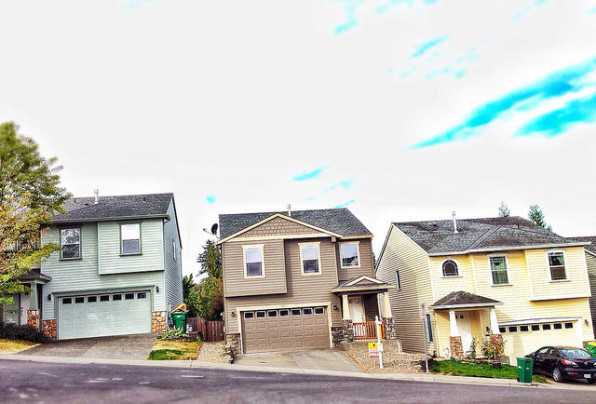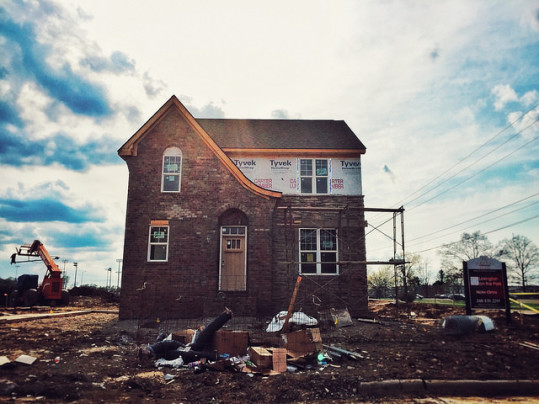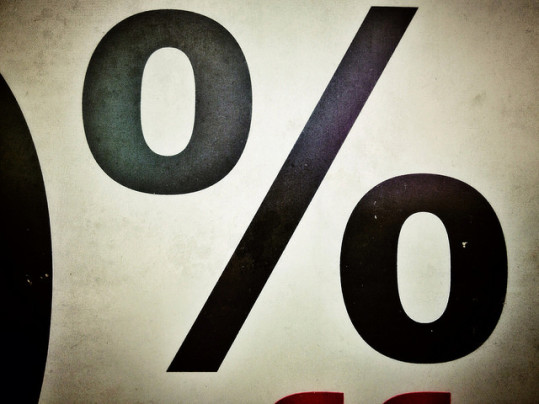The National Association of Realtors’ Pending Home Sales Index measures the number of contracts to buy homes signed each month. Because the index tracks contract signings but not closings, it’s a good indicator of future home sales. According to the most recent release, pending home sales rose for the fourth consecutive month in April and reached their highest level since May 2006. The 3.4 percent increase pushed contract signings 14 percent above year-before levels and was the largest year-over-year increase in nearly three years. Lawrence Yun, NAR’s chief economist, said the continued gains highlight the fact that buyer demand is strong. “Realtors are saying foot traffic remains elevated this spring despite limited – and in some cases severe – inventory shortages in many metro areas,” Yun said. “Homeowners looking to sell this spring appear to be in the driver’s seat, as there are more buyers competing for a limited number of homes available for sale.” Because demand is currently outweighing supply in many markets, some are experiencing accelerating price increases. Still, pending sales have now improved compared to year-before levels for eight consecutive months. More here.
Archive for May 2015
Home Loan Demand 14% Higher Than Last Year
According to the Mortgage Bankers Association’s Weekly Applications Survey, applications for loans to buy homes are now 14 percent higher than they were one year ago. The year-over-year improvement is a positive sign for the housing market and indicates that there are more prospective home buyers looking to buy this spring. Still, on a week-over-week basis, purchase applications were virtually unchanged from the week before and refinance demand fell 4 percent. In part, last week’s results were due to increasing mortgage rates. The MBA’s survey – which has been conducted since 1990 and covers 75 percent of all retail residential mortgage applications – found that rates increased across all loan categories, including 30-year fixed-rate mortgages with both conforming and jumbo balances, loans backed by the Federal Housing Administration, and 15-year fixed-rate loans. Despite recent rate increases, however, purchase demand has remained relatively steady while, at the same time, refinance activity has experienced a general trend downward. More here.
New Home Sales Beat Expectations In April
New data released by the U.S. Census Bureau and the Department of Housing and Urban Development shows sales of newly built single-family homes rose 6.8 percent in April from the month before. The increase, which beat economists’ expectations for the month, put sales 26.1 percent above last year’s level. The results join other recent reports indicating that the housing market’s recovery may be building momentum. In fact, industry observers believe residential real estate – strengthened by an improved job market – is finally benefiting from years of pent-up demand, leading to an influx of young buyers looking to purchase their first home. Regionally, new-home sales surged in the Midwest, climbing 36.8 percent to a seven-year high. Elsewhere, the South saw a 5.8 percent increase, while the Northeast and West saw declines. Also in the report, the number of new homes for sale rose slightly but inventory overall is still tight. At the current sales pace, there is a 4.8-month supply of new homes available for sale. Typically, a six-month supply is considered a healthy market. More here.
Residential Real Estate Gains Momentum
Each month, Fannie Mae’s Economic & Strategic Research Group updates their outlook for the housing market and the broader economy. According to the most recent release, the group still expects the economy to pick up from a slow first quarter but they’ve adjusted their forecast for annual growth downward. Despite the change, however, Fannie Mae sees positive momentum in the housing market. “We also are seeing positive developments in the housing space, supporting our forecast of moderate but broad-based improvement in 2015 compared to last year,” Fannie Mae’s chief economist Doug Duncan said. “Purchase mortgage applications have moved up consistently for a couple of months, and while refinance applications have recently pulled back, the actual volume of both purchase and refinance originations earlier in the year came in stronger than we had projected.” Because of this, the group has raised their forecast for total mortgage originations this year. Overall, their forecast reflects a general optimism about the residential real estate market that began late last year and has continued through the spring selling season. Early numbers suggest that, though there is still some volatility in home sales, this spring is off to a stronger start than last year. More here.
Existing Home Sales Up 6% From Last Year
In April, sales of previously owned homes were 6.1 percent higher than they were at the same time last year. But, though sales levels were elevated from the year before, they slowed a bit from March’s pace, dropping 3.3 percent on a month-over-month basis. Lawrence Yun, NAR’s chief economist, said the drop was due to a lack of available homes for sale. “April’s setback is the result of lagging supply relative to demand and the upward pressure it’s putting on prices,” Yun said. “However, the overall data and feedback we’re hearing from Realtors continues to point to elevated levels of buying interest compared to a year ago. With low interest rates and job growth, more buyers will be encouraged to enter the market unless prices accelerate even higher in relation to income.” In other words, there are a lot of prospective buyers looking for homes but not enough homes for sale. However, that may be changing. The NAR also reports that total for-sale inventory increased 10 percent in April, bringing the number of homes available for sale to 2.21 million. At the current sales pace, that’s a 5.3-month supply. Typically, a 6-month supply is considered a healthy market. More here.
Mortgage Demand Slows With Rate Rise
According to the Mortgage Bankers Association’s Weekly Applications Survey, average mortgage rates increased last week across all loan categories, including 30-year fixed-rate mortgages with both conforming and jumbo balances, loans backed by the Federal Housing Administration, and 15-year fixed-rate mortgages. At the same time, mortgage demand slipped slightly, falling 1.5 percent according to the Market Composite Index, which measures both refinance and purchase activity. Mike Fratantoni, MBA’s chief economist, said rising rates may be making borrowers hesitant. “Overall purchase activity fell for the week, along with conventional refinance volume, but government refinance volume increased,” Fratantoni said. “The level of purchase applications remained 11 percent higher than the same week last year, but the drop this week may indicate borrowers being wary of the recent run up in mortgage rates.” Still, the fact that the number of applications for loans to buy homes is 11 percent higher than last year indicates spring home sales will surpass last year’s pace. The MBA’s survey has been conducted weekly since 1990 and covers 75 percent of all retail residential mortgage applications. More here.
New Home Construction Has Best Month Since 2007
The housing market’s recovery over the past few years has been up and down. Some measures of the market’s health have rebounded faster than others. Home prices, for example, have largely recovered the losses suffered following the financial crisis. Housing starts, on the other hand, have lagged behind. Starts are a gauge of how many new homes began construction during the month and an important indicator of, not only the real estate market’s health, but the overall strength of the economy. And according to new numbers released by the U.S. Census Bureau and the Department of Housing and Urban Development, new home construction had its best month since November 2007 in April. In fact, housing starts surged 20.2 percent from the month before to an adjusted annual rate of 1,135,000. The report also found a 10.1 percent increase in the number of building permits requested, an indication that the improvement should continue in the months ahead. It is welcome news for a number of reasons but, for potential home buyers, it means more new homes for sale, which should help with inventory levels in markets where fewer homes for sale have led to price increases and more buyer competition. More here.






